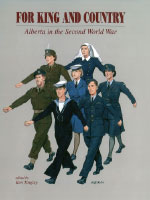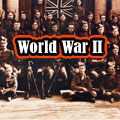The Calgary Highlanders at the Walcheren Causeway:
October, 1944
David J. Bercuson
Reprinted with permission of the author and publisher of For King and Country: Alberta in the Second World War There is no evidence cited to support this extraordinary statement, probably because none exists. Given that the order in which brigades move anywhere is invariably determined by division's own staff, Keefler would have been 'loading the dice' had he made such a condition. It is, however, entirely possible that Keefler approached the 4th Brigade CO [Commanding Officer], Brigadier Frederick Cabeldu, with the proposition that his troops attempt the attack and that Cabeldu demurred because his men had spearheaded the division in the past two days whereas 5th Brigade had followed in reserve.9In later years the CO of the 5th Brigade, Brigadier W.J. Megill, would only say that he had been given an assignment, and that was that: "Foulkes wanted the end of Walcheren cleared and sealed and turned over to the Brits. That is what we tried to do."10 In fact, the 5th Brigade war diary makes plain that Megill and his staff were not pleased that their men had been picked for the job. When the Brigade staff first heard this news on 30 October, the war diarist recorded: "This comes as an unpleasant order as we were definitely infrn [informed] that we were to go no further than the WEST end of ZUID BEVELAND and in fact had been promised a weeks rest once we had done this job."11
There is no evidence cited to support this extraordinary statement, probably because none exists. Given that the order in which brigades move anywhere is invariably determined by division's own staff, Keefler would have been 'loading the dice' had he made such a condition. It is, however, entirely possible that Keefler approached the 4th Brigade CO [Commanding Officer], Brigadier Frederick Cabeldu, with the proposition that his troops attempt the attack and that Cabeldu demurred because his men had spearheaded the division in the past two days whereas 5th Brigade had followed in reserve.9In later years the CO of the 5th Brigade, Brigadier W.J. Megill, would only say that he had been given an assignment, and that was that: "Foulkes wanted the end of Walcheren cleared and sealed and turned over to the Brits. That is what we tried to do."10 In fact, the 5th Brigade war diary makes plain that Megill and his staff were not pleased that their men had been picked for the job. When the Brigade staff first heard this news on 30 October, the war diarist recorded: "This comes as an unpleasant order as we were definitely infrn [informed] that we were to go no further than the WEST end of ZUID BEVELAND and in fact had been promised a weeks rest once we had done this job."11
The last shots in the fight to clear the eastern end of the causeway had barely died away when Highlander CO Major Ross Ellis and the other 5th Brigade COs were called to a brigade 0 [orders] Group at 1000 on the morning of 31 October and told what was in store for them.12 Megill wanted the Black Watch to send "a fighting patrol" across the causeway as a "quick operation" because "no artillery support" was yet available; if the Black Watch could "bump a bridgehead," the way would be prepared for "a more ambitious operation."13 That operation was to be an amphibious attack by the Calgary Highlanders. Once a bridgehead had been secured on Walcheren by the Highlanders, the Maisonneuve were to follow and drive westward on the north side of the tracks while the Highlanders advanced on the town of Arnemuiden, about two kilometres west of the causeway, on the south side of the tracks.
The Black Watch CO disregarded Megill's instructions and, instead of trying to get a patrol across the causeway, mounted a full three company assault which began at about 1040. As soon as the Black Watch approached the causeway, German mortar and shell fire began to fall on it. One group of men managed to reach within some 25 metres of the far end but the rest were pinned down and eventually ordered to withdraw after last light. Most were able to do so but those at the farthest end, including a few casualties, had to take refuge in the German built slit trenches until evacuated by the Highlanders in the early morning hours of 1 November.14
As the Black Watch men on the causeway underwent their trial by fire, the Highlanders prepared for their over-water assault. They had presumably been picked for this operation due to assault training they had received months before in England, but most of the officers and men who had undergone that training were now gone. Captain Frank "Nobby" Clarke, who would command B Company during the causeway attack, was put in charge of the training, which consisted of teaching men how to get into, and out of, outlines of boats drawn in the dirt. He ridiculed the idea of a water assault on Walcheren and did not hesitate to let Ellis know,15 but Ellis had his orders, whatever misgivings he may have had. In the end Megill decided that there was not enough water in the tidal flats to float assault boats and too much mud for wheeled or tracked vehicles. At 1830, he informed Ellis that the Highlanders would have to go over the causeway itself.
The assault plan was straightforward; after a heavy bombardment of the far end by the divisional artillery of the 52nd (Lowland) Division, the Canadian 5th Field Artillery, the heavy mortars of the Toronto Scottish, and the mortars of the Highlander mortar platoon, B Company would move onto the causeway and establish a semi-circular bridgehead about 200 metres in depth at the far end. Then D and A Companies would move through, the former pushing towards the southwest, the latter to the northwest. Ellis may not have known that the "polder," or the dyked and reclaimed marshland to the immediate southwest of the Walcheren end of the causeway, was partially flooded and that D Company would have to move atop the dyke or along it. Once all that had been accomplished, the Highlanders were to expand the bridgehead in the direction of Arnemuiden in preparation for the Maisonneuve who were to pass through them. The area would then be turned over to the 52nd (Lowland) Division which would drive deeper into Walcheren. To oversee the battle, Ellis moved his tactical headquarters to a sunken brick road running south from the causeway approach road, on the east side of a dyke. From atop the dyke he would be able to see what was happening along the causeway and on the Walcheren dyke about a kilometre away over the salt marsh. It was an exposed position, but this was the first major battle for Ellis as battalion CO and he obviously intended to show his men that he was right up with them.
The night was exceptionally clear. Clarke and his men waited at the eastern end of the causeway, anxious to start across. Signaller Frank Holm carried the Mark 18 radio set. As they waited he remarked to one of the other men: "Tonight is Halloween. I wonder if there are going to be any fireworks?"16 Within minutes he had his answer; at 2340, the guns opened up on the far end of the causeway and the line of dykes to the north and south of it. According to Megill the 52nd (Lowland) artillery had the task of blasting the Germans from their fire trenches atop the dykes but failed to hit their targets.17 Almost as soon as the Canadian and British artillery opened up, German artillery began to fire at the causeway. At 2400 B Company moved out, inching forward along the south side of the railbed and trying to use it as partial cover from the machine guns firing at them from the north dyke.18
Notes
9. Terry Copp, The Brigade [Stoney Creek, Ontario, 1992], p. 156.
10. D. Bercuson interview with W. Megill in possession of the author.
11. WD, 5 CIB, 30/10/44.
12. Except where otherwise cited, the story of the causeway battle is taken from WD, Calgary Highlanders (CH), 31/10/44-2/11/44.
13. NAC, RG 24, Records of the Department of National Defence (henceforth DND Records), Vol. 10985, File 265.011, "The capture of Zuid Beveland and operations to secure a bridgehead on Walcheren Island." draft version. There are two versions of this document in this file, a draft version and a shorter final version.
14. WD, Black Watt, 31/10/44; 1//11/44.
15. Reed interview with Frank "Nobby" Clarke, in the possession of the author.
16. Frank P. Holm, A backward Glance [ Sault Ste. Marie] p. 33.
17. DND Records, Vol. 10985, File 265.011, "The capture of Zuid Beveland and operations to secure a bridgehead on Walcheren Island."
18. Ibid. The railbed, being 1.5 metres or so higher than the road, afforded some cover against fire from the north, but not the south.








